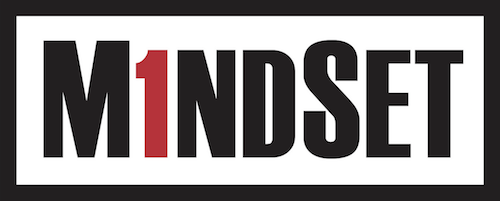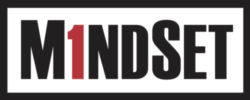For the past 20 years or so, it has been all the rage for companies to claim that they have a workforce comprised of “engaged employees.” Now I suspect some of you are as tired of this topic – or at least this terminology – as I am. This terminology has become an often grating cliché…striking many of us much like how Charlie Brown and his childhood friends hear adults in their comic strip world, “wah, wah, wah.”
Why the growing negative reaction to this term? I suspect it is because of the vast number of self-proclaimed wizards who pompously point out their deep understanding of the importance of engaged employees, all while offering slim to no actionable insights or knowledge as to how to actually achieve it.
You see, employee engagement does have the potential to offer tremendous value to businesses. But you’ve got to do a LOT more than talk about it. You have to know, in crisp detail, how to actually create it. There is a distinct (and not widely known) body of knowledge on how to create a great culture with engaged employees. I’ll share more on that later in this article. But for now, let’s take a quick history detour.
Where Did the Term “Employee Engagement” Come From?
The intellectual antecedents of the term “employee engagement” can be traced back to Abraham Maslow, Mary Parker Follett, Frederik Herzberg, and John Stacy Adams, but the first clear use of the term is generally credited to William Kahn in 1990. Kahn then defined engagement as occurring when an employee is allowed to bring his or her personal skills and interests to the job setting. For example, a person who is passionate about race cars and has the opportunity to work in a pit crew for a NASCAR driver would, by this definition, be highly engaged.
By the year 2000, employee engagement became less about the employee being able to incorporate his or her personal interests into their work, and instead became defined as an employee who is willing to go above and beyond to the benefit the organization.
Fueled by proponents who reported significant correlations between employee engagement and employee satisfaction, employee performance, and company profitability, many jumped into the business of offering assessments of employee engagement. Others offered consulting services designed to help improve employee engagement, often generating mixed to less-than-stellar results. This was, in good part, the impetus for the development of our two companies, MindSet and BetterCulture. Our mission has been to give leaders the playbook, i.e., the specific knowledge and tools they can use to enhance culture and….well, to have engaged employees.
What Does it Take to Create Engaged Employees?
There are two big reasons why you should be concerned with employee engagement. First, an employee’s passion about their company is contagious. When your company builds a great relationship with an employee, that employee will build a great relationship with your customers. Second, engaged employees are determined to win. They will strive to beat the competition, while your disengaged employees will simply shrug at yet another loss.
So let’s see if we can get real. Finding the right answer is often predicated on asking the right questions. When it comes to employee engagement, here is a listing of questions that we encourage BetterCulture clients to consider and discuss:
- Do your employees believe their work is important? Do they believe that the products or services their company provides are important? Are there things you can do to help them better appreciate the impact of their work? (Note: You will win the “employee engagement lottery” if your employees believe that (a) their company is doing meaningful work, (b) no other company does that work as well, and (c) they make an essential contribution to the organization’s overall success.)
- Do your employees find their work interesting? Are there things you can do to make their work more intellectually engaging?
- Do your employees feel appreciated? Are your employee recognition and compensation methods having the impact you want? How could they be enhanced?
- Are your employees proud of their company? Are they aware of the company’s laudable history? Do you make sure good news is widely spread throughout the company? Are great employees, and outstanding achievements, celebrated?
- Do employees respect their immediate supervisor? Do you have an effective mechanism for identifying potential supervisory talent, such as the MindSet 22 listing?
- Is there consistency in what employees experience when interacting with supervisors in your company, i.e., is there a common approach to leadership from one supervisor to another? Are MindSet’s Seven Principles of Leadership© understood and embraced across your leadership team?
- Do you provide supervisors with first-rate training on how they can generate engaged employees? Does that training specify what leaders can do to grow, motivate, and retain great staff?
- Do you have mechanisms to measure the cultural health in your workgroups throughout the company? For example, are you making use of powerful tools like the BetterCulture Survey©?
- Have you established clear expectations for employee attitude and behavior? Do you offer programs like BetterCulture’s 20 Tenets© to advance the health of your culture and demonstrate your commitment to individual employee success?
- Do employees feel a connection to, and respect for, senior leadership? What can be done by those in the C-Suite to increase employee conviction that their company genuinely cares about employee success?
Efforts to enhance employee engagement will be accelerated by an in-depth consideration of these questions – a process MindSet enjoys facilitating for senior management teams if you want an outside player to help you get clarity. Answering these questions will let you move beyond the tiresome bromides, and help you to see a clear pathway to better cultural health – and yes, to have more engaged employees.
Jack Welch said, “There are only three measurements that tell you nearly everything you need to know about your organization’s overall performance: (1) employee engagement, (2) customer satisfaction, and (3) cash flow.” I agree, but with this caveat: The second and third measurements will in good part be determined by the strength of the first.

Founder of MindSet, LLC.

